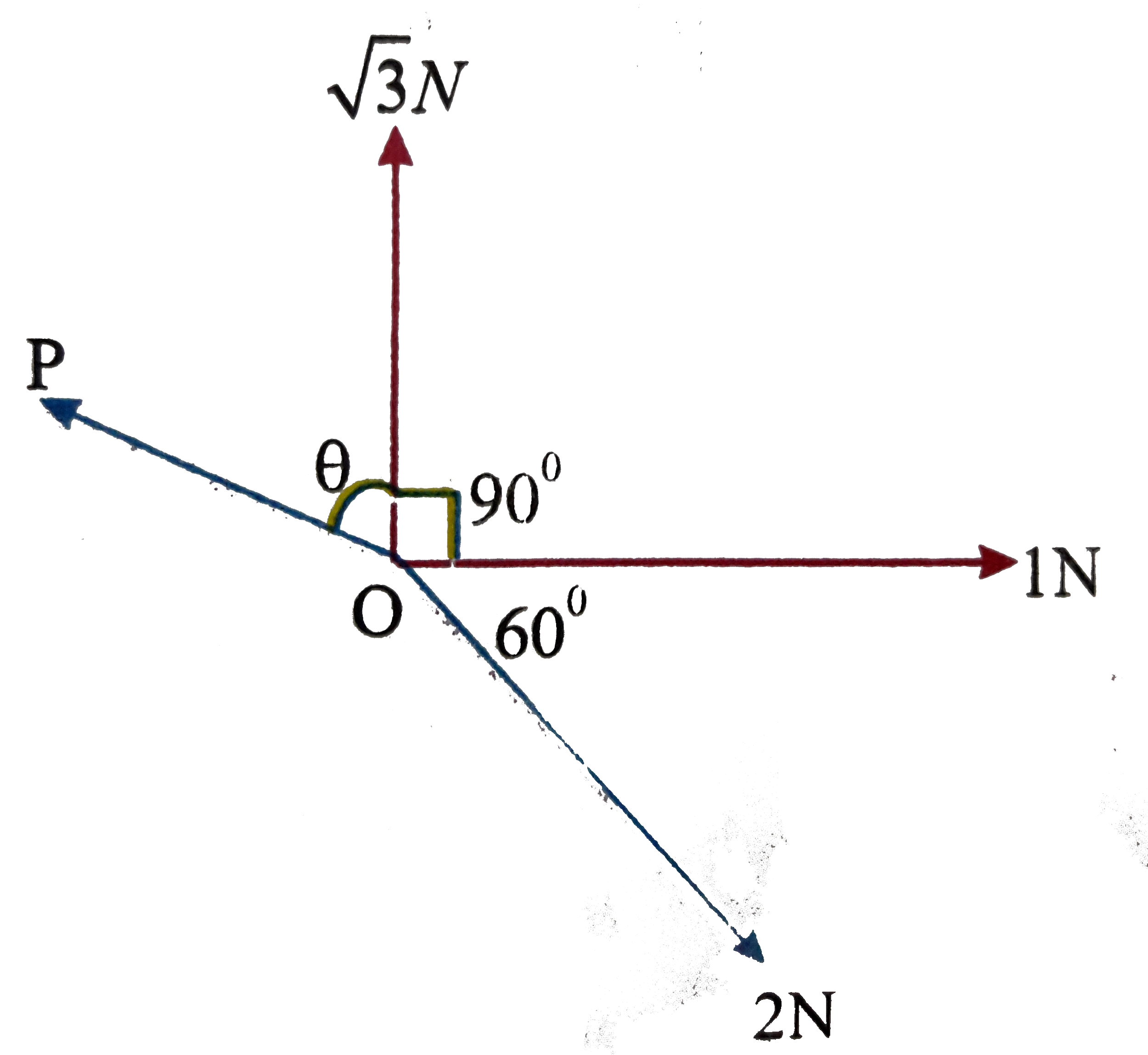Complete Solutions to LEVEL-II (H.W) of chapter VECTORS of Class 11 book with complete answers and questions
| Class 11 | PHYSICS |
| Chapter | VECTORS |
| NARAYANA | LEVEL-II (H.W) |
| Number Of Questions | 14 |
| Academic Year | 2023-24 |
A particle has a displacement of 12 m towards east then 5 m forwards north and then 6 m vertically upwards the resultant displacement is nearly
View SolutionFour co-planar concurrent forces are acting on a body as shown in the figure to keep it in equilibrium. The the values of P and `theta` are.

View SolutionO is apoint on the gournd chosen as origin. A boby first suffers a displacement of `10sqrt(2)`m North-East, next 10 m north and finally `10sqrt(2)` North-West. How far it is from the origin.
View SolutionIf the two directional cosiness of a vectors are `(1)/sqrt(2)` and `(1)/sqrt(3)` then the value of third directional consine is
View SolutionA force `vecF=3hati+chatj+2hatkN` acting on a particle causes a displacement `vecS=-4hati+2hatj-3hatk` m. if the workdone is 6 joule, the value of of c is
View SolutionIf `veca` and `vecb` are two unit vectors such that `veca+2vecb` and `5veca-4vecb` are perpendicular to each other, then the angle between `veca` and `vecb` is
View SolutionIf `vecA=9hati-7hatj+5hatk` and `vecB=3hati-2hatj-6hatk` then the value of `(vecA+vecB).(vecA-vecB)` is
View SolutionThe work done by a force `2hati-hatj+5hatk` when it displaces the body from a point (7.2.5) is
View SolutionThe component of `vecA` along `vecB` is `sqrt(3)` times that of the component of `vecB` along `vecA`. Then A:B is
View SolutionIf `vecA=(2hati+3hatj)` and `vecB=(hati-hatj)` then component of `vecA` perpendicular to vector `vecB` and in the same plane is
View SolutionIf `vecA+vecB=vecR` and `2vecA+vecB` is perpendicular to `vecB` then
View SolutionIf `vecA=(1)/sqrt(2)cos theta hati+(1)/sqrt(2)sin thetahatj`, what will be the unit vector perpendiuclar to `vecA`.
View Solution`(hati+hatj)xx(hati-hatj)=`
View SolutionThe diagonals of a parallelogram are `vecA=2hati-3hatj+hatk` and `vecB=-2hati+4hatj-hatk` what is the area of the paralleogram?
View Solution
LEVEL-II (H.W) questions and complete solutions for chapter VECTORS of NARAYANA PHYSICS (HINGLISH) of Class 11